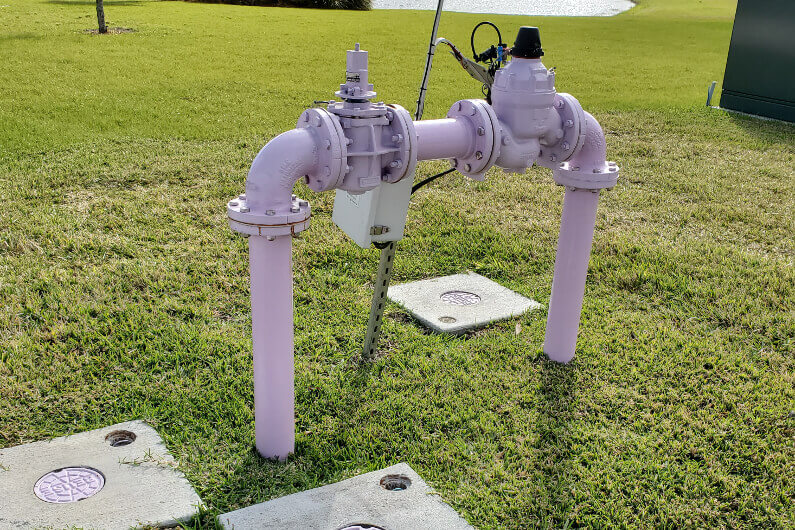Do I Perform a Backflow Test on My Water?
Do I Perform a Backflow Test on My Water?
Blog Article
We have come across this great article on What is Backflow Testing? down the page on the net and accepted it made good sense to talk about it with you here.

Yes, you need to backflow examination your house's water supply to make certain that the water is free of toxic substances as well as harmful levels of chemicals. Due to the tools needed and also room for mistake, you ought to not attempt to execute backflow testing by yourself. We suggest that you call a specialist plumber every number of years to examine your water.
Backflow Can Impact Both You and Your City
Many cities develop backflow standards since unsafe heartburn can influence the public water supply in addition to a single structure. Fortunately, modern-day cities have backflow devices in place that protect the water that originates from most houses as well as commercial residential properties. The real risk originates from watering systems, which can harm the water with toxic plant foods, manure, and also various other chemicals.
What Triggers Heartburn?
A common reason of backflow is a loss of water pressure that causes the water to siphon back into the water supply. After some time, there is a loss in water stress and also the hose pipe starts to suck the water back right into the water supply. As you can picture, there are now chemicals from the paint that are entering the water supply, possibly posing a threat.
Heartburn Testing is Required by Legislation in Certain Cities
Depending on where you live, you may really be called for by law to backflow examination your law. Iowa City keeps a document of all properties offered by the city's water supply.
You Can Protect Against Backflow
The major objective of a heartburn device is to protect against water from moving in reverse into your water supply. Plumbing professionals mount the tool on the pipelines in your residence to guarantee that the water just moves in the correct instructions.
What is Backflow?
In short, heartburn is when water moves upwards-- the contrary instructions in the plumbing system. This is additionally known as "backpressure." When the water moves in this instructions, it can mix with damaging toxins and also position a risk.
Call a Plumber to Examine for Backflow Prior To It is Far too late
A plumbing business can quickly check your house's water to determine if there are any kind of hazardous chemical degrees. And also if you do discover that your water has high degrees of toxins, a plumber can quickly mount a backflow prevention tool.
Yes, you need to backflow examination your home's water supply to make sure that the water is free of toxic substances and unsafe levels of chemicals. Several cities establish backflow standards due to the fact that unsafe backflow can impact the public water supply in enhancement to a single structure. A common reason of backflow is a loss of water pressure that triggers the water to siphon back right into the water supply. After some time, there is a loss in water pressure and the pipe starts to draw the water back into the water supply. The major function of a backflow device is to stop water from streaming backward right into your water supply.
WHY DOES BACKFLOW TESTING NEED TO BE DONE EVERY YEAR
What Is Backflow?
Toxic gas backing up into a building is one example of potential backflow issues, but backflow can occur in many other ways.
Backflow is generally referred to as the reversal of a liquid or gas in a plumbing system.
Most issues for the public occur with backflow resulting in contaminated drinking water. If you look up backflow issues online you’ll probably find references to “potable” water. That means drinking water.
There have been backflow issues in the past with drinking water. Chemicals, sewage and other contaminants have found their way into drinking water causing health issues for those that count on the fresh water.
What Causes Backflow?
In a residence or commercial building water generally flows one way. This normal flow is usually driven by consistent pressure in the water and waste system.
Anything that changes the normal pressure in the system can lead to backflow.
Fire hydrant use or malfunction can reverse the normal pressure in the system on a city line, but backflow can occur in a number of different ways.
Sometimes backpressure might be caused by someone using a garden hose and submerging the end of the hose in a pool of liquid. If pressure is lost the flow could reverse and contaminants could be released into the drinking water.
Anytime there is a connection between contaminants and the drinking water there is potential for a backflow issue. Sometimes these connections are not immediately obvious like the garden hose connecting to a building’s drinking water supply.
Backflow Regulations
The Environmental Protection Agency (EPA) provides guidelines and regulations for state and local governments regarding backflow. State and local governments also have their own guidelines and regulations for backflow prevention.
Arizona has its own backflow regulations.
Due to issues with backflow in the past, regulations require backflow preventer devices to be used in nearly all residential and commercial buildings.
A backflow preventer is a device that prevents backflow as cross-connection points where potential backflow issues may occur.
While backflow is not a common occurrence, preventers are in place to make sure there is no contamination should something malfunction or go wrong with a building’s water supply.

I ran across that piece on Commercial Backflow Testing while doing a lookup on the internet. Remember to take a moment to share this entry if you appreciated it. We treasure reading our article about Is backflow testing necessary?.
Click Here
Report this page